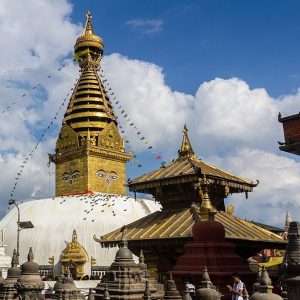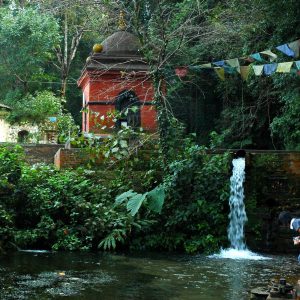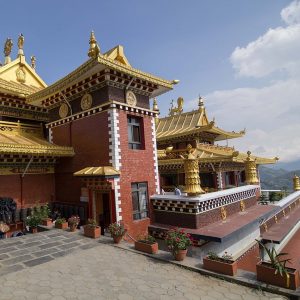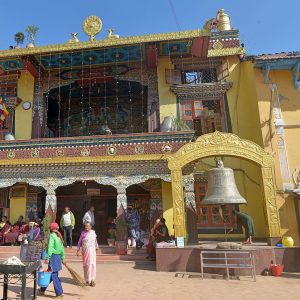Visualizing Himalayan Buddhism
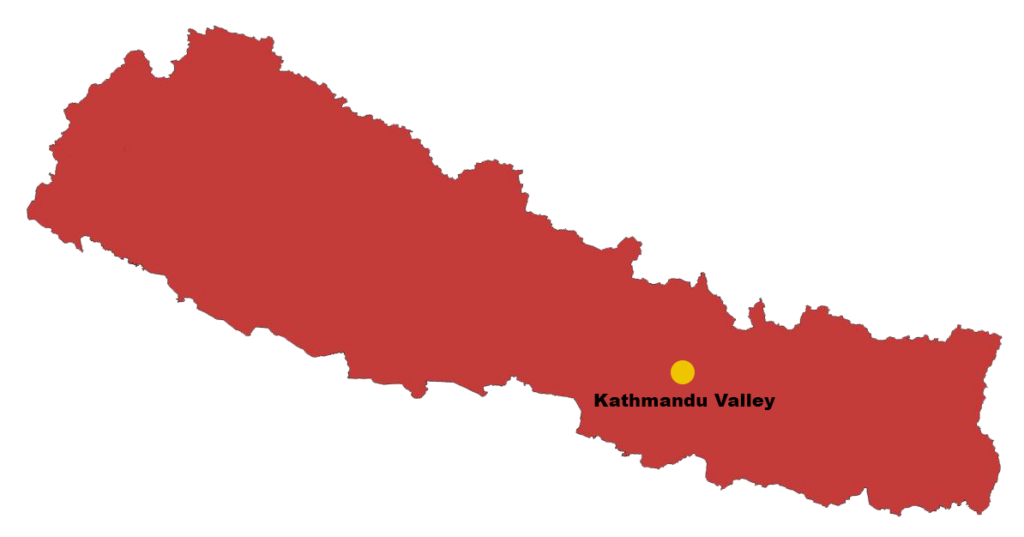
Buddhism is often portrayed as an abstract set of ideas or philosophies. Yet, the emergence, spread and survival of the tradition founded by the Shakyamuni Buddha has long relied on the objects, sites and people who have given it form in different places and ways. In the Himalayas, people congregate daily, and also travel from afar, to pay homage to the Buddha and his teachings through ritual practices at temples, stupas (chaitya , cheeva in Sanskrit and Newari), and other sacred sites. These locations are maintained through the efforts of lay and/or monastic lineages with social and historical ties to the architecture and objects that figure powerfully in their identities. Buddhism as a set of ideas and teachings cannot be separated from its embodied material life.
This website seeks to help visitors appreciate this embodied aspect of Himalayan Buddhism using immersive models of selected Buddhist sites in and around the Kathmandu Valley, Nepal to connect users with living spaces where Buddhism takes place. Each model visualizes unique details that show different aspects of the tradition and the ways it is practiced. Follow the links under “locations” to explore each environment in 360-degree 3D (and, in some cases, to watch the accompanying 360 degree videos). If you have access to VR or AR technology, the models are also viewable in VR and AR.
You will find a brief description of each of location below. Use the drop down menus above to navigate within this website.
Swayambhunath Stupa Complex, Kathmandu, Nepal (Swayambhunath Mahachaitya)
There are several 3D models associated with this site available here for you to explore. Each is listed separately under “3D Models.,” including a complete 3D model of the full Swayambhunath environment. Begin by getting your bearings using the map on the landing page of the Swayambhu submenu. Then consider viewing the 360 video in which Professor Leve circumambulates the stupa to see what it looks like live (including the sounds, monkeys, dogs, pigeons, tourists and other visitors). For more details, stories, and amazing pictures of the site, visit see swoyambhustupa.com. This is a website created and maintained by members of the family of Buddhacharya tantric priests who have historically been charged with caring for the chaitya. It has the fullest and more detailed and accurate information about the place, its history and what you are seeing in the models of any website of which I am familiar. If you want to know more, check it out!
Asura Cave, Pharping, Nepal
There are two files on this site that will help you get the fullest view of this important cave, which is associated with the tantric Buddhist master Padmasambhava (“Guru Rinpoche”) who is credited with helping to establish Buddhism in Tibet. One is a 360 degree video that shows actual daily practice in/at the cave, showing pilgrims as they enter and exit and engage in ritual acts (including a pilgrimage group that does a collective puja). The other is a 3D model that allows you to explore the cave independently (without the video running). The 3D model includes additional pictures and links to other (and better) 3D and VR sites produced as part of this project that cannot be hosted on this UNC website. I recommend that you view all of the gateways for the fullest experience of this unique and sacred space.
Namo Buddha, Nepal
For this site, there are two models to explore. One is of the old outdoor stupa at the historical Namo Buddha location. The other is an interior shrine in the Thrangu Tashi Yangtse monastery which was recently constructed nearby the historical stupa (because Namo Buddha is considered such a powerful site and is, hence, a great place to build a monastery). You’ll also find some general information on the pages with the 3D models, and links to external sites that will add context. There are also two 360 videos that were taken in the main prayer hall of the new monastery. The model of the shrine room is another environment in this same monastery but is a smaller space that is used for different events.
Be sure to read the description to understand the significance of this location, which is believed to have hosted a well-known event in one of the Buddha’s previous lives before being born, and attaining enlightenment, as the Shakyamuni.
Guru Lhakhang (Tamang Gompa) at Boudhanath, Kathmandu, Nepal.
This is an intimate shrine room/assembly hall that sits on the top floor of the temple that is colloquially known as the Tamang Gompa at Boudhanath stupa. It is located directly across from the entrance to the stupa on the main kora (circumambulation) route. It is locally referred to in the colloquial as the Tamang Gompa in recognition of its historical identification with this Nepali Buddhist ethnic community. On the lower floors of the temple, there are other lakhang that are used for larger rituals and events. The main image here is Padmasambhava (“Guru Rinpoche”) — the same one who is remembered as having spent time meditating in the Asura cave. Because of his role in establishing Buddhism in Tibet, Padmasambhava plays an important role in all schools of Tibetan Buddhism.
